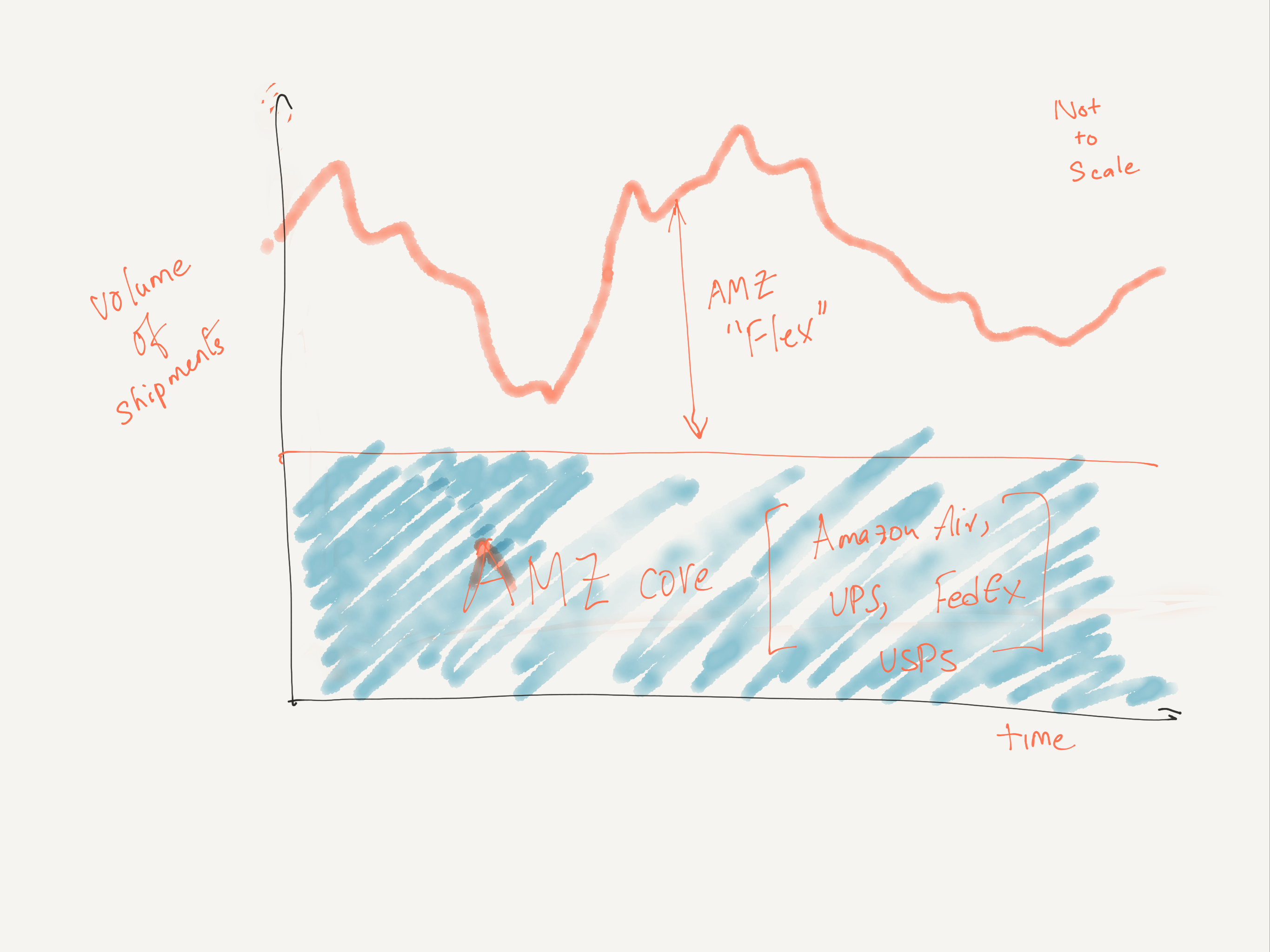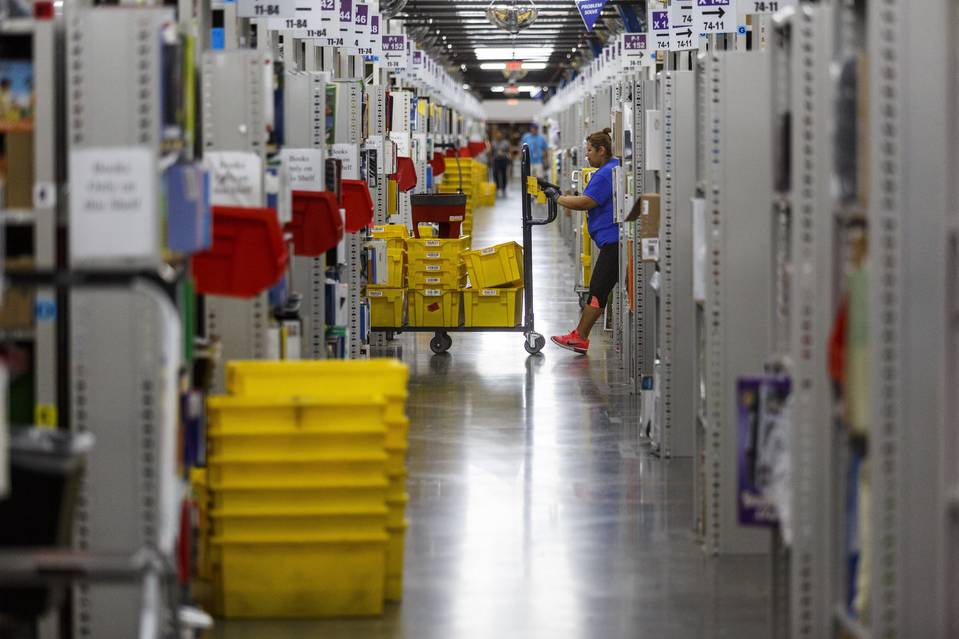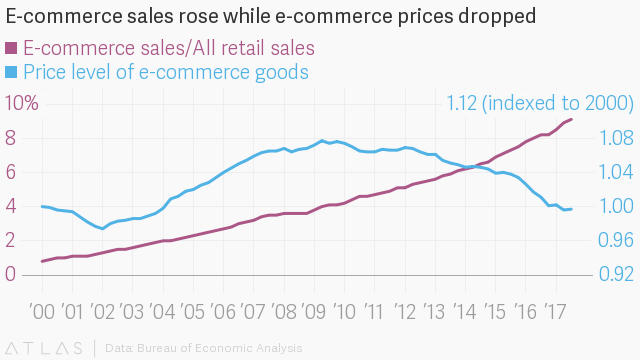Here is an interesting article from the Wall Street Journal about the struggles of scaling Automation at UPS. (An interesting tidbit: UPS says about half its packages are processed through automated facilities today. At FedEx, 96% of ground packages move through automated sites. ) The article seems to blame the problems of UPS on the lack of automation and having unionized employees. I think the main problem may be that the automation at UPS has grown organically in a slapdash fashion. In fact, the relevant quote is: As online-shopping volume grew, UPS relied on what a former UPS executive calls “a Band-Aid” approach to upgrading its network, patching it up by adding extra shifts or extending hours, or retrofitting parts of older…
Leave a CommentTag: E-commerce
In 2013, a guy who was trying to pitch a company, called DoorBot, that sold security doorbells, went nowhere on Shark Tank, as the sharks rejected his offer. The founder Jamie Siminoff positioned the idea at $7M. Here is the video. Last year, the company was valued at $460M. Last week, the company, now called Ring, was acquired by Amazon for $1B. This is not a post to castigate the poor assessments of Ring’s original business idea: As ideas evolve they get better, and some cosmic confluence of interests can be helpful for a firm. — Ring, at one Billion USD, is a tremendously expensive acquisition for Amazon. In fact, Ring is Amazon’s second-biggest acquisition, after Whole Foods. Similar large…
Leave a CommentI wrote about Workampers, old retirees that move around the country in search of work, in my earlier blog post that discussed the excellent book, Nomadland by Jessica Bruder. In that post I mentioned that: So, it is very likely that it was not a young person that picked, packed or shipped the gift that you bought online this Holiday season. Instead, it is very likely that it was an old retiree… Increasingly e-commerce channels rely on retirees to pick products in the warehouse, which are then shipped to customers. (Picking is the lowest entry-level job in warehouses). Much of such retirees were people who lost their savings during the 2008 recession. Recently, one of the best reporters writing on operational issues in…
Leave a CommentFor long time e-commerce and operations observers, it was no surprise that Amazon was opening its “shipping” business: It was as predicable as a bowling ball on the lane slowly rolling to the pins. Much earlier, in 2014, Amazon had invested in a British shipping firm, Yodel. In 2016, Amazon had purchased a 25% stake in the French parcel Delivery company Colis Prive. Through FBA (Fulfillment by Amazon), Amazon already handles “logistics and shipping” for third party sellers – currently at 51% of all sales units (in 2017 Q4). It has been at that proportion for several quarters now. So no surprise, really. However, let’s talk about who is absolutely critical for Amazon to compete with UPS and FedEx. Compared…
Leave a CommentIn my earlier post on the Brief History of Amazon Prime, I had mentioned about the stickiness of Amazon Annual Prime Pricing. An issue with scaling revenues this way is stickiness of prices. It took a whole nine years for Amazon to go from $79 to a more profitable fee of $99. (I thought the fees would be raised to $108 at $9 a month – closer to NetFlix rates – but the fees were stickier than I had thought). Prime subscription prices vary quite a bit geographically around the world. For instance, the annual subscription is $99 in the U.S., £99 in the U.K. (equivalent to USD 115), $22 in Italy, and about $8 in India. However, within certain geography…
Leave a CommentAn Amazon worker at Chattanooga, Tenn., fulfillment center in August. Photo Credit: Doug Strickland/Associated Press A fascinating article by Laura Stevens on WSJ (Subscription required) talks about how Amazon sets its third-party “deal of the day”. The first compelling fact that stood out from the article was the scale of revenues generated by third-party sellers on Amazon. A graph of the total gross merchandise volume (GMV) sold by Amazon, shows that in the recent years, the third-party share of Amazon revenues have increased from 50% to about 70% (even as Amazon’s revenues have exploded). How are these deals evaluated and picked by Amazon? Amazon’s deal of the day selections hinge on two important factors—whether it thinks an item will be…
Leave a CommentThe above chart from Quartz shows how much e-commerce sales in the US have grown because of the low price. In fact, the price level is now comparable to 2000 prices. In short, many goods on e-commerce are being sold on very marginal and progressively diminishing profits.
Leave a Comment

